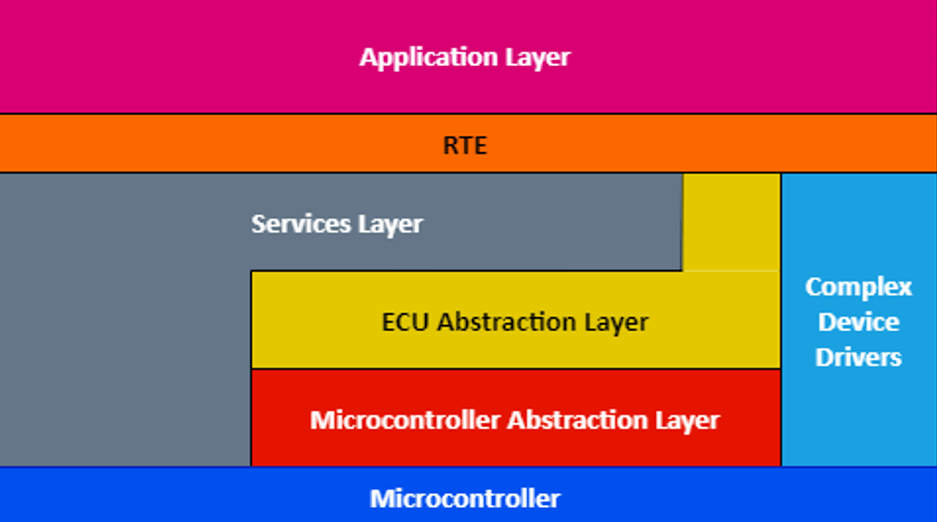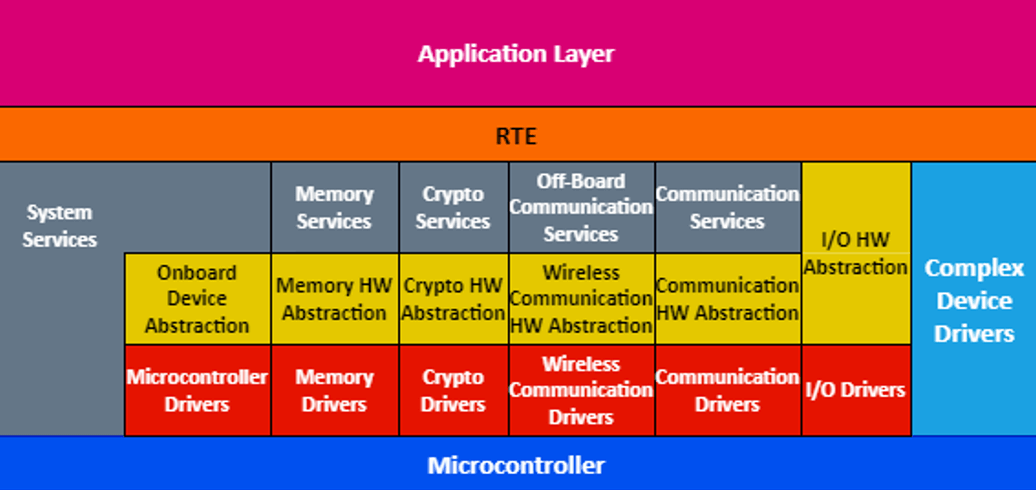Guide to the Classic Autosar Architecture
At AutosarToday, we've recognized we were long overdue for a higher-level guide on "What is Autosar" and it's finally time to delve into it!
Overview
Classic Autosar targets software for automotive Electronic Control Units (ECUs). These ECUs interact with sensors and actuators, connect through vehicle networks (CAN, LIN, FlexRay, Ethernet), and operate under resource constraints in terms of processing power and memory. They adhere to hard real-time requirements and execute programs through internal and external flash memory.
Architecture Layers
To understand the internal architecture of Classic Autosar, we can start with three main layers, further subdivided into seven:

The Seven Layers of the Classic Autosar Architecture
For simplicity, let's focus on seven key layers:
-
Application Software (ASW):
- Contains application functionality divided into software components.
- Hardware-agnostic, independent of the underlying ECU.
-
Runtime Environment (RTE):
- Manages communication between application and Basic Software (BSW).
- Provides a clear separation between component-based and layered approaches.
-
Basic Software (BSW):
-
Comprises services, ECU abstraction, and microcontroller abstraction functionality.
-
Services Layer:
- Offers OS functionalities, network communication services, memory management, diagnostics, and more.
- Independent of the underlying ECU hardware.
-
ECU Abstraction Layer (ECUAL):
- Enables access to peripherals irrespective of their physical location.
- Abstracts upper layers from ECU hardware using APIs.
-
Microcontroller Abstraction Layer (MCAL):
- Closest layer to hardware.
- Includes drivers that directly access the microcontroller and its peripherals.
-
Complex Device Drivers (CDD):
- Accommodates special software with strict timing constraints or from a non-Autosar environment.
- The most unrestricted layer.
-
Internal Groupings
Expanding these layers into their internal groupings provides a detailed view:

Internal Groupings of the Seven Classic Autosar Layers
Main Internal Groupings:
-
Input / Output:
- Manages sensors, actuators, and other ECU peripherals.
-
Memory:
- Handles internal and external memory access.
-
Crypto:
- Includes cryptographic primitives, potentially with hardware acceleration.
-
Communication / Off-board Communication:
- Manages intra, inter-ECU, and external environment communication systems.
-
System:
- Encompasses OS, timers, error memory, ECU state management, watchdog, and other system services.
This breakdown serves as a foundation for understanding the Classic Autosar architecture. Feel free to explore each individual module for an in-depth view, through our multiple articles. And do not forget to place yourself on the waiting list for the upcoming books!
More from the author
© AutosarToday —@LinkedIn